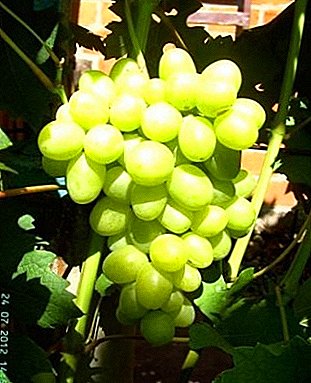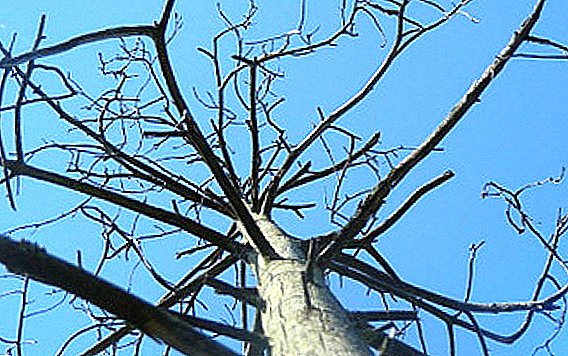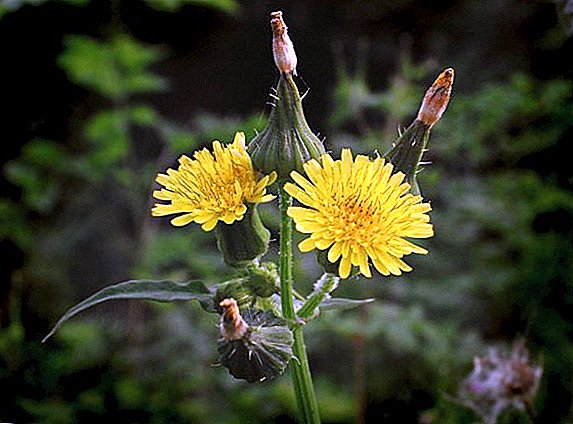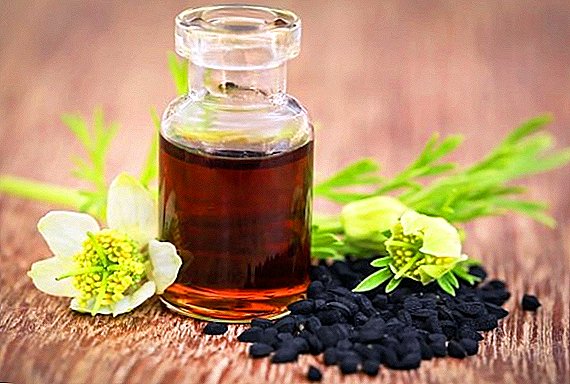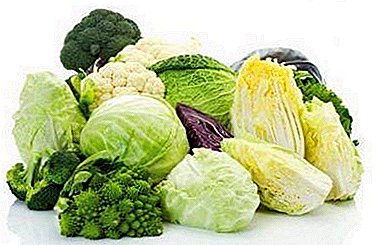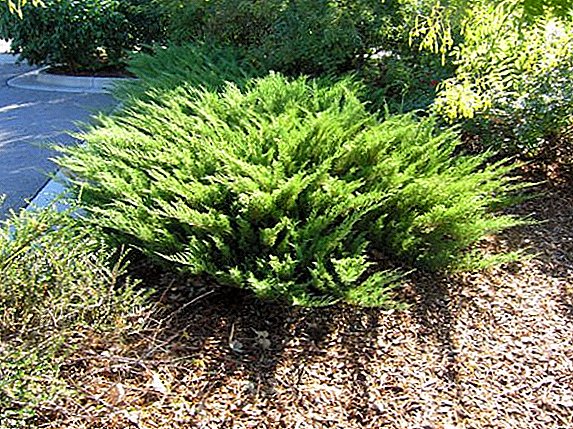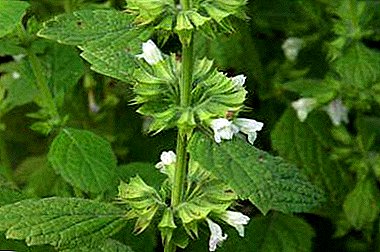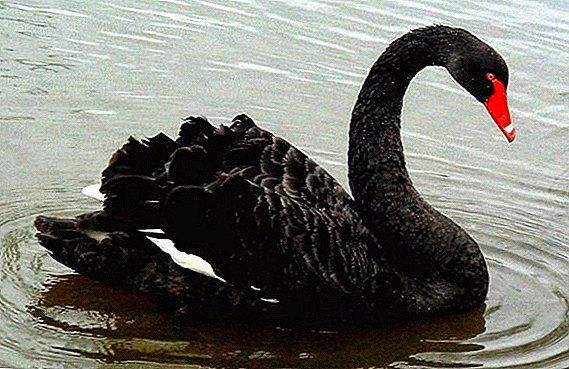 Swan is a very beautiful and graceful bird. White swans, perhaps, have seen everything, but the black bird is not common. In our article we will tell you what a black swan looks like, where this bird lives and what difficulties you may encounter when it is bred at home.
Swan is a very beautiful and graceful bird. White swans, perhaps, have seen everything, but the black bird is not common. In our article we will tell you what a black swan looks like, where this bird lives and what difficulties you may encounter when it is bred at home.
Description of a graceful bird
Birds have a very unusual appearance, which we propose to familiarize with. 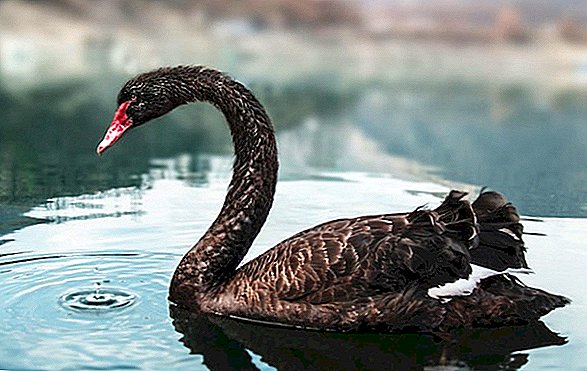
Appearance
The feathered neck is the longest compared to its peers. There are 32 cervical vertebrae in it, thanks to which it is easy for a bird to hunt under water. When she flies, her neck is pulled out and is about half the length of the entire swan.
Important! Often, leeches can get into the mouth and nose of water bodies. It is worth regularly inspecting the bird and if a parasite is found, remove it as soon as possible with tweezers and wash the damaged area with sodium chloride.
Feathers and feet are painted black, white color is characteristic only of individual feathers, which are hidden in the depths. The edges of the wings attract attention by the presence of curly feathers.
The beak has a red color, and on its edge there is a white ring.
The shade of a swan's eyes can vary and varies from orange to light brown. 
Dimensions and weight
We offer to get acquainted with the characteristics of females and males.
- male weight is about 7-8 kg.
- female weight is about 4-5 kg.
- male body length is about 140 cm.
- female body length is about 110 cm.
- wingspan can reach 200 cm.
Learn more about breeding swans at home.
Vote
Black swans have a difference from spines - they have a voice, thanks to which they can greet each other, while their head rises and falls. Birds can swim in the middle of the reservoir, put their heads on the water and blow the pipe, thereby inviting their relatives or showing their displeasure. 
Where live and how much live
Most often, this beautiful bird can be found in Australia and Tasmania. Around the middle of the 19th century, the black swan was brought to New Zealand, where it successfully settled. In European countries and North America, birds can be found in the park or nature reserve.
They prefer reservoirs with a shallow depth in which fresh water flows.
The age of black swans living in the wild can be up to 10 years.
Lifestyle in the wild
The difference between the black swan and other water birds, including other types of swans, is that it does not apply to migratory birds. Nevertheless, he can boast of his mobility - having heard even insignificant noises, he tries to change the place of his deployment.
However, the distance to a new place usually does not exceed 100 m. Typically, birds live all their lives in the area where they were born and grew. Young males prevent other male individuals from settling in their habitat. 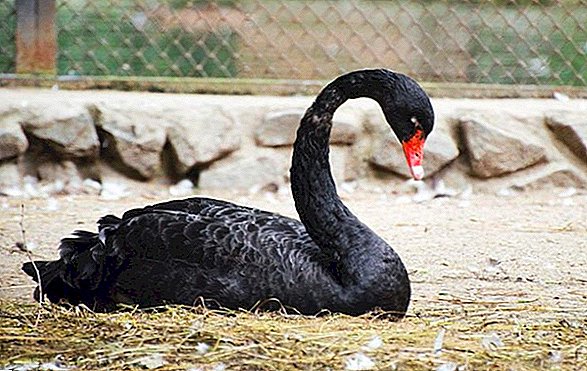
What to eat
They use aquatic plants and small algae as food, they will gladly eat grain - wheat or corn. They can also pluck foliage from weeping willows or coastal grasses.
Nesting period
The marriage period may fall on different periods and depends on the region. In addition, annual high water cycles also have a big impact. Black swans, which were brought to Europe, do not change their Australian rhythm and can breed chicks even in winter.
Did you know? In black swans, same-sex couples consisting of two males are quite acceptable. They lure the female only in order to lay eggs, and then immediately expel her from the nest.
Nesting individuals occur in colonies - they build a large nest in the form of a hill in shallow water. They do not change the nest every year, as a rule, they have it permanent. Black swans are very loyal, so most often they do not change partners during the continuation of life.
The nest is usually built by both parents together, after which they also take care of the offspring together.
The female can lay between 4 and 8 green-colored eggs with an unpleasant odor. Parents take turns incubating them for 6 weeks. Unfortunately, the males are not very good at coping with this responsibility and quite often they do not turn over their eggs or may even sit by. 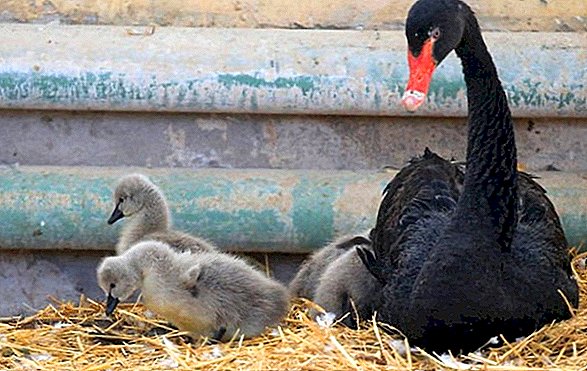 After alternate incubation of eggs for 35-40 days, the chicks are born. After all the chicks hatch, the whole family is found on the water.
After alternate incubation of eggs for 35-40 days, the chicks are born. After all the chicks hatch, the whole family is found on the water.
Population and conservation status
Today, the black swan population is more than 500 thousand individuals, so there is no threat of their extinction.
The guarding status of the bird is “Risk is small”; it is in the group “Species under the least threat (LC)”.
You may also be interested to learn about the peculiarities of breeding such unusual birds as ostriches, peacocks, and pheasants at home.
Difficulty breeding at home
If desired, black pigeons can be bred at home, but you need to know some rules for keeping this bird.
Bird house
In order for a bird to adapt, it is important to create conditions for it as close as possible to the natural ones.
In the summer, it can be a shelter house, where the birds will stay day and night. He is a booth on the water. For two swans, the area should be 1 square meter across the floor. The roof should be insulated with straw, like the floor. In the house should be drinking and eating. 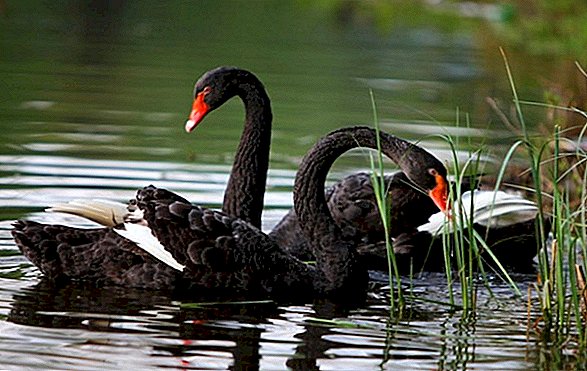 But for the winter period it is necessary to prepare the house. It is very important that the inside is clean and dry. It is necessary to exclude cracks and drafts. When it is cold outside, it is worthwhile to take care of the artificial heating of the room - these can be warm rugs or heated floors.
But for the winter period it is necessary to prepare the house. It is very important that the inside is clean and dry. It is necessary to exclude cracks and drafts. When it is cold outside, it is worthwhile to take care of the artificial heating of the room - these can be warm rugs or heated floors.
The height of the structure should be 2-2.5 m, and the area - 2-2.5 square meters for two swans. Put straw, shavings or husks on the floor. The thickness of the layer should not be less than 10 cm.
Important! To prevent the development of obesity, the daily caloric value for one individual should not exceed 900 kcal.
It is necessary to regularly air the house, clean it from litter. The litter should be changed at least once every 7 days. Inside it is necessary to ensure the air temperature within + 16-18 ° C, and the light day in winter should last about 14-16 hours.
Water
For bathing birds you can use pots and troughs. But in order to be able to multiply, they need more water space. Of course, ideal if there is a pond or it is possible to fence off a small section of the lake.  If there are no natural reservoirs nearby, it is necessary to build it on your territory using available tools.
If there are no natural reservoirs nearby, it is necessary to build it on your territory using available tools.
Paddock for walking
If there is a natural reservoir, then ashore for paddock its coast perfectly approaches. If the reservoir is artificial and located on the site, you will need to equip the paddock yourself: plant a lawn around the water, where meadow and garden greens will grow.
How to endure winter cold
Black swans do not tolerate frosts too well. Since they have loose plumage, it deprives them of their resistance to low temperatures, unlike other breeds. In order to multiply and be healthy, they need warmth. As a result of frostbite, paw injuries, infections, and sometimes death can occur.
What to feed
Feeding of birds is carried out twice a day. The first meal, morning, consists of a mixture of vegetable feed with millet, white bread crumb. In the evening it is worth pouring steamed grains and minced fish into the feeder. It is important to fill the mixture strongly with water - so the bird will be able to independently express food. 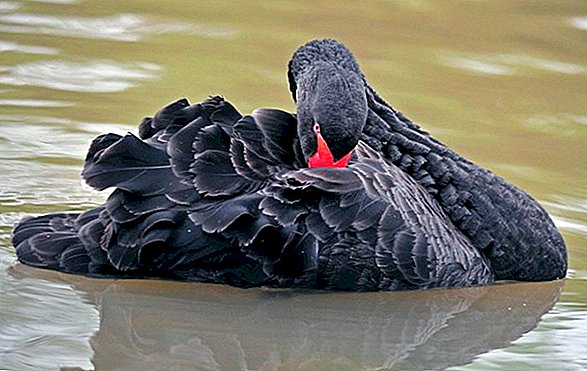 In the summer, the basis of vegetable feed is crushed carrots and cabbage. In winter, vegetables should be eliminated and replaced by chopped dried parboiled grass. You can give a little corn, peas, millet, oats and barley. They need to be cooked and soak well.
In the summer, the basis of vegetable feed is crushed carrots and cabbage. In winter, vegetables should be eliminated and replaced by chopped dried parboiled grass. You can give a little corn, peas, millet, oats and barley. They need to be cooked and soak well.
In winter, it is necessary to reduce the amount of grain given to prevent obesity in birds.
In addition to the usual food, it is necessary to include in the diet and mineral supplements. Good for this fit chicken feed. Sometimes the collection of micronutrients is carried out separately from various drugs. They are mixed in water and given to a bird for 20-30 days, after which they take a break for 1 month and repeat the course.
It is not recommended to give the bird bread, especially black, as it can cause serious problems with digestion.
Did you know? For the first time the term "black swan" was mentioned by the ancient Roman satirist Juvenal in the expression "A good man is as rare as a black swan."
The black swan is a beautiful bird that can decorate any body of water. With the desire and ability, everyone can get a graceful bird in his yard. However, it is worth remembering that the feathered handsome man needs care and proper care.



